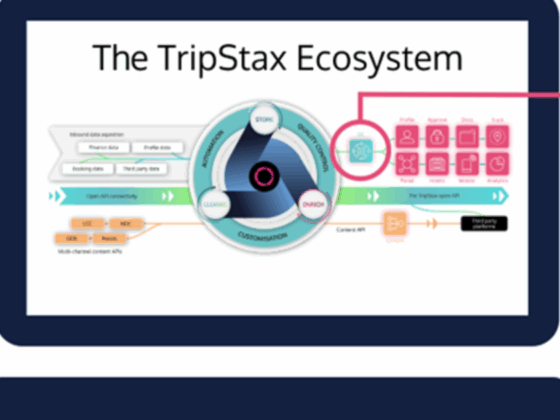
The hospitality industry has long relied on aesthetics, amenities, and service as its primary marketing differentiators. Yet, in an age where digital attention spans are shrinking and customer acquisition costs are rising, these traditional approaches are no longer enough. Marketing that simply showcases rooms or lists amenities is easy to scroll past. With countless options available to travelers, visual appeal alone can no longer command loyalty. For hotels to stand out, they must connect with potential guests on a deeper, more emotional level.
That connection is forged through storytelling.
Storytelling is a strategic tool that builds emotional resonance, increases brand preference, and drives measurable outcomes like direct bookings and revenue growth. When storytelling is aligned with data and revenue strategy, it moves beyond brand-building to become a performance driver capable of reshaping a hotel’s market position.
Let’s explore how narrative-driven marketing gives hotels a competitive edge, how it can be informed by revenue insights, and how hospitality leaders can put it into action consistently across their properties and platforms.
Why Storytelling Matters in Hospitality
Hotels don’t just offer a place to sleep; they offer transformation: a weekend escape, a wedding celebration, a moment of peace, a business triumph. These experiences carry emotional weight, which makes hospitality uniquely positioned to benefit from storytelling-led marketing. More than a transaction, a hotel stay often becomes part of a person’s most important memories.
Scientific research supports this. Neuroscience has shown that stories activate more parts of the brain than facts alone, making them more memorable and persuasive. A study by Hasson et al. (2010) at Princeton University demonstrated that storytelling leads to a phenomenon called “neural coupling,” where the brain activity of the listener mirrors that of the storyteller, fostering deeper understanding and engagement over time.
When hotels use storytelling to tap into guests’ emotions, they create not only awareness but meaningful connections that turn first-time guests into loyal brand advocates. SSP Marketing Industry Expert Cary Broussard gives the example of using unique experiences as a hook:
“Stories that feature trends or one-time events to inspire action can create a sense of urgency. For example, lunar or solar events: ‘You don’t want to miss this incredible opportunity to see this once-in-a-lifetime solar eclipse at our hotel/resort because we have the best views and services to customize your experience.’ … There will be high demand, so a discount isn’t the answer. However, book two nights and receive a third, 50% off, or a free upgrade to include shoulder nights prior to or post-event may be effective.”
Big hospitality brands understand storytelling’s power to humanize their properties. Marriott’s “Golden Rule” campaign and Hilton’s “For the Stay” both reflect a clear shift toward emotionally driven messaging. These campaigns resonate because they center the guest experience as a story. Yet for many in the industry, storytelling is still treated as a one-off campaign tactic rather than a consistent, integrated strategy that informs every guest touchpoint.
The opportunity lies in making storytelling an ongoing part of the hotel’s brand narrative—not just seasonal advertising, but a central pillar of how the hotel speaks, shares, and sells in the marketplace.
Integrating Revenue Strategy Into Brand Storytelling
For storytelling to truly drive results, it must be informed by data. This is where collaboration between revenue management and marketing becomes critical. Alignment between these teams ensures that emotional storytelling is also smart, strategic, and timely.
As SSP Revenue Management Industry Expert Josh Ramsey puts it:
“Revenue strategy and storytelling only work when they speak to the right guest. If you don’t understand what your customer segments value about your offering, you risk telling the wrong story and chasing the wrong business. Use the data to understand which customers value your offering and find out why they value it so much. This can help you craft offers and messages that actually matter to them, and you’ll create connection and conversion.”
Revenue data reveals guest behavior patterns: when they book, what they value, and what drives premium spending. These insights form the foundation of powerful, timely stories that reflect demand windows, seasonality, and evolving consumer intent.
For instance, a data-backed “why now” narrative can stimulate bookings during off-peak seasons by highlighting unique local experiences or events that guests may not find elsewhere. Similarly, premium room categories can be promoted through storytelling that emphasizes exclusivity, thoughtful design, or bespoke service, providing justification for higher ADR while emotionally appealing to aspirational travelers seeking an exceptional experience.
When revenue teams share insights with marketing, they provide the strategic fuel for storytelling that not only builds the brand but also moves the needle on conversion across multiple channels.
Case in Point: Using Revenue Insights to Inspire Better Stories
A recent example illustrates how performance data can inform strategy and where storytelling can extend its power.
Josh Ramsey partnered with a high-performing hotel to identify untapped revenue opportunities. While the hotel already had solid performance metrics, closer analysis showed pricing inefficiencies and underutilized high-demand periods. Within just two months, through targeted adjustments and revenue-focused initiatives, the hotel achieved:
- RevPAR growth of 25%
- An ADR increase of $20
- Incremental revenue gains from retail and premium room pricing adjustments
Though this case study focused on tactical pricing strategy, the lessons extend into marketing. The data revealed exactly when guests were most willing to spend more, and why. Imagine pairing this with storytelling that elevates the guest experience: exclusive suite stories, behind-the-scenes service features, or personalized moments that resonate emotionally with the traveler’s aspirations.
That kind of narrative could reinforce premium pricing by emphasizing not just what the product is, but why it matters on a personal, emotional level. This is where many hotels miss out: they optimize pricing and inventory, but fail to tell the story that makes those strategic decisions meaningful and memorable to the guest.
In short, data unlocks opportunities—but story gives them staying power.
Practical Storytelling Tactics for Hotel Brands
So, what does narrative-driven marketing look like in practice? For hospitality brands, it starts with identifying and consistently telling the stories that matter most to your audience and stakeholders. These fall into three core “story arcs”:
- People: Profiles of team members, testimonials from guests, or features on community partners bring humanity to the brand. Audiences connect more deeply with real people than with faceless properties.
- Place: Highlight the unique character of your location, whether that is the local neighborhood, cultural events, food scene, or natural surroundings. Make the destination part of the experience and a reason to book.
- Purpose: Share the hotel’s values through stories about sustainability, diversity, wellness, or giving back. Purpose-led content builds trust and loyalty, especially with mission-minded travelers seeking brands aligned with their principles.
Once stories are identified, they should be activated across the right platforms and tailored to audience preferences:
- LinkedIn: Ideal for B2B positioning, executive visibility, and recruitment branding. Thought leadership content can help build trust among business travelers and meeting planners.
- Instagram and TikTok: Visual platforms for immersive storytelling that showcase real-time moments, behind-the-scenes action, and guest-centric content.
- Email and newsletters: High-ROI owned channels for deepening relationships, promoting direct offers, and driving repeat bookings through curated storytelling and exclusive offers.
A crucial consideration is format. Storytelling can be executed through videos, carousel posts, editorial-style articles, short-form social captions, blog features, or even interactive polls and guest interviews. The key is consistency and authenticity that fits the platform’s strengths.
For example, a testimonial campaign featuring real guests discussing their stay can become a video series on social media, a spotlight in the hotel newsletter, and a quote overlay on the booking page, reinforcing the story across the entire customer journey from inspiration to decision.
The ROI of Storytelling: Engagement, Loyalty, and Revenue
Content that centers on real stories consistently outperforms traditional promotional messaging across key engagement and performance metrics. It boosts click-through rates, increases time on site, drives social sharing, and encourages deeper engagement with highly targeted audiences.
The value of storytelling also extends beyond digital engagement. Strong narrative content enhances recruitment outcomes, reinforces internal culture, and improves guest perception of brand authenticity, all of which contribute to long-term brand loyalty and revenue performance in tangible ways.
Cary Broussard adds:
“By connecting with the dreams and aspirations of those who love travel and have an affinity and proficiency for hospitality, storytelling can attract and retain employees… and ideally appreciate and deliver great customer service.”
Conclusion: From Messaging to Meaning
In an increasingly competitive landscape, storytelling in hospitality is no longer a peripheral creative exercise. It is a core strategy that, when fueled by insight and executed with consistency, creates true competitive advantage.
The most effective stories are those shaped by real business realities: seasonality, destination demand drivers, pricing strategy, guest preferences, and booking behavior. When marketing and revenue management align around shared goals, storytelling becomes more than messaging, it becomes meaning.
The result is a brand that not only attracts attention but earns loyalty. A hotel that doesn’t just promote its features, but resonates through its values, people, and purpose. And a marketing strategy that does more than sell. It connects, inspires, and endures.
As the hospitality industry continues to evolve, hotels that lead with narrative will find themselves not only remembered but preferred—and recommended—by the guests they serve.








